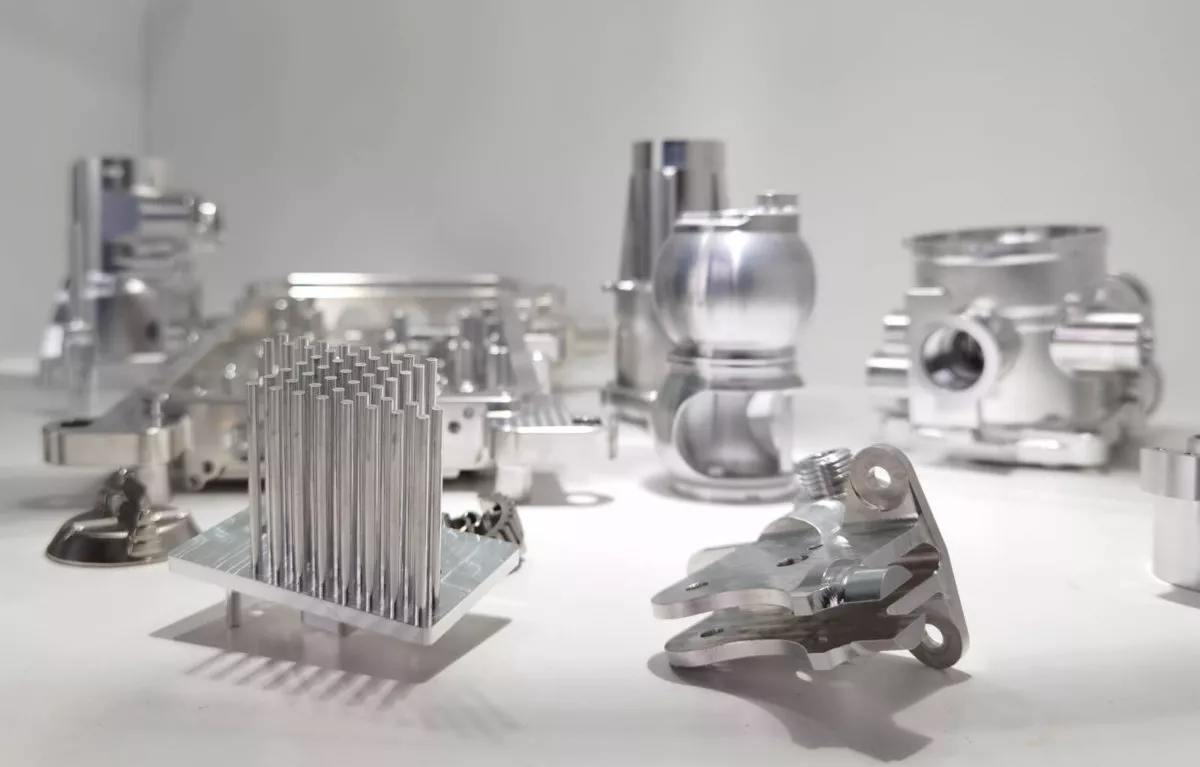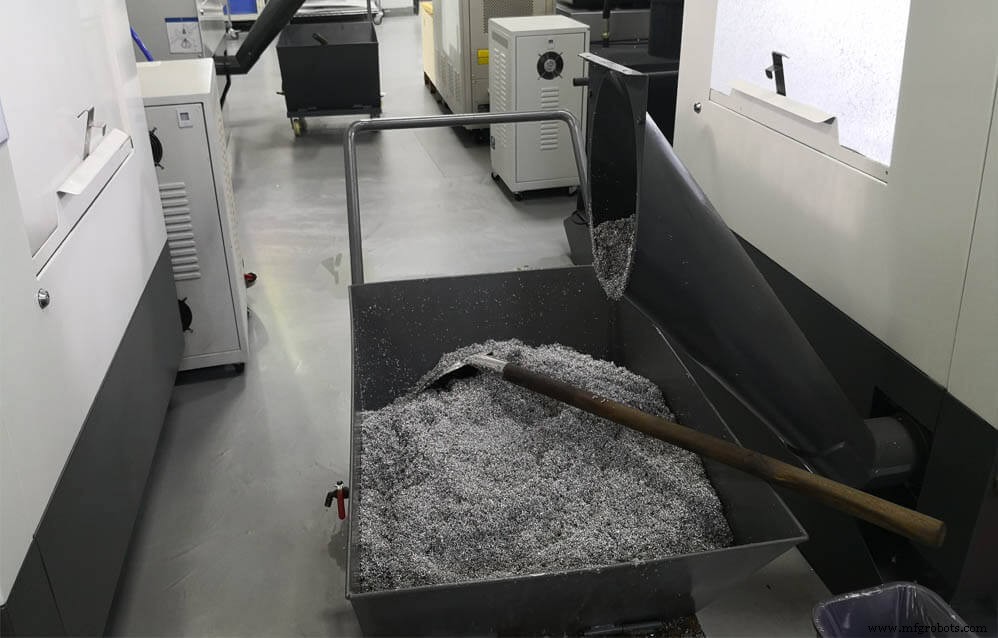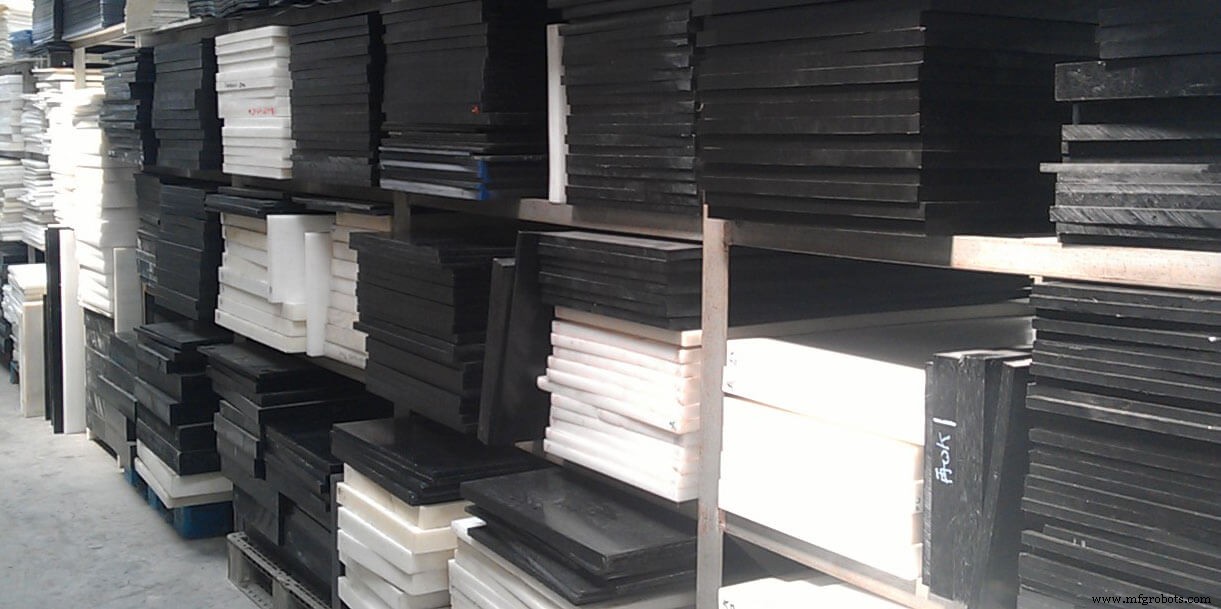铝数控机床:优点和可能的替代方案
对于 CNC 加工项目,铝是最受欢迎的材料选择之一,因为它具有理想的物理特性。它很坚固,是机械零件的理想选择,其氧化的外层可以抵抗元素的腐蚀。尽管铝制零件在汽车、航空航天、医疗保健和消费电子领域特别受青睐,但这些优势已使铝制零件在所有行业中普遍存在。
铝还具有简化和改进 CNC 加工过程的特定优势。与许多其他具有相似材料特性的金属不同,铝具有出色的可加工性:其许多等级可以被切削工具有效穿透,容易碎裂,同时相对容易成型。正因为如此,铝的加工速度是铁或钢的三倍以上。
本文解释了铝 CNC 加工的一些关键优势——它是我们最广泛要求的原型设计和生产工艺之一的原因——同时也提出了铝的加工替代方案。
其他金属和塑料除了自身的独特优势外,还可以提供与铝类似的优势。
铝CNC加工的好处
- 可加工性
- 耐腐蚀
- 强度重量比
- 导电率
- 阳极氧化电位
- 可回收性

来自 3ERP 的典型 CNC 铝制零件
可加工性
工程师选择铝作为加工零件的主要原因之一是,很简单,这种材料易于加工。虽然这对于制造零件的机械师来说似乎更有好处,但对于订购零件的企业以及最终将使用它的最终用户来说,它也有很大的好处。
因为铝屑容易,而且容易成型,所以用数控机床可以快速准确地切割。这有一些重要的后果:首先,加工工作的时间短,使过程更便宜(因为机械师需要的劳动力更少,机器本身需要的操作时间也更少);其次,良好的机械加工性意味着当刀具穿过工件时零件的变形较小。这可以让机器满足更严格的公差(低至 ±0.025 mm),并带来更高的精度和可重复性。
耐腐蚀
不同等级的铝在耐腐蚀性方面差异很大——它们能够承受氧化和化学损伤的程度。幸运的是,一些最受欢迎的 CNC 加工等级是最耐用的。例如,6061 与强度谱低端的其他合金一样,具有出色的耐腐蚀性。 (由于合金铜的存在,坚固的铝合金的耐腐蚀性可能较差。)
强度重量比
铝具有理想的物理特性,使其成为机械和外观部件的理想选择。其中最重要的两个是金属的高强度和轻质,这两者都使该材料有利于关键部件,例如航空航天和汽车行业所需的部件。飞机配件和汽车轴是可以用铝成功加工的两个例子。
然而,不同等级的铝有不同的用途。由于具有良好的强度重量比,6061 等通用牌号可用于各种零件,而 7075 等高强度牌号在航空航天和船舶应用中可能更受青睐。
电导率
CNC 加工的铝制零件由于其导电性而可用于电气元件。虽然导电性不如铜,但纯铝在室温下的电导率约为每米 3770 万西门子。合金的导电率可能较低,但铝材料的导电率明显高于不锈钢等。
| 材料 | 室温下的电导率 (S/m) |
| 铜 | 5960万 |
| 铝 | 3770万 |
| 锌 | 1690万 |
| 铁 | 1000万 |
| 碳钢 | 700万 |
| 钛 | 240万 |
| 不锈钢 | 150万 |
阳极氧化电位
机加工铝部件在消费电子行业中特别受欢迎,不仅是出于强度和重量要求,还出于重要的美学考虑。除了可以接受油漆和色调外,铝还可以进行阳极氧化处理,这是一种表面处理工艺,可增厚部件的保护和氧化外层。
阳极氧化过程通常在机械加工完成后进行,包括在电解酸浴中通过电流通过零件,从而产生更耐物理冲击和腐蚀的铝片。
重要的是,阳极氧化更容易为机加工的铝部件添加颜色,因为阳极氧化的外层是高度多孔的。染料可以穿过外层的多孔部分,并且由于嵌入金属部件的坚硬外部,因此不太可能碎裂或剥落。
可回收性

铝的另一个好处是它的高可回收性,这使得它更适合那些寻求尽量减少对环境影响的企业或那些只想减少材料浪费和收回部分支出的企业。可回收材料在 CNC 加工中尤为重要,在 CNC 加工中存在相对大量的废料,以切削刀具的切屑形式存在。
CNC 加工中铝的替代品
出于多种原因,企业可能会为 CNC 加工寻找铝的替代品。毕竟,这种金属有一些弱点:它的氧化物涂层会损坏工具,而且它通常比钢等替代品更昂贵,部分原因是铝生产的能源成本高。
以下是铝的一些潜在加工替代品,重点介绍了它们与流行的银灰色金属的区别和相似之处。
金属
钢和不锈钢
优于铝:
- 实力
- 耐温性
比铝更差:
- 可加工性
- 体重
钢和不锈钢是数控加工中广泛使用的材料。由于它们的高强度,钢倾向于用于高应力应用和需要牢固焊接的应用。钢可以耐非常高的温度,不锈钢可以通过热处理来增强其耐腐蚀性。
然而,虽然加工钢的设计是为了提高可加工性,但铝仍然是这两种材料中更易加工的材料。钢也比铝更重且硬度更高,这取决于应用,可能需要也可能不需要。
如果耐温性是一个关键考虑因素而重量不是,那么钢可能是铝的理想替代品。
钛
优于铝:
- 强度重量比
比铝更差:
- 费用
钛可以用作铝的同类替代品,因为它的主要优点是出色的强度重量比——这也是铝的主要优点之一。钛的重量与铝相似,但强度几乎是铝的两倍。和铝一样,它也具有很强的耐腐蚀性。
这些优势体现在钛的较高价位上。虽然这种材料是飞机部件和医疗设备等零件的绝佳选择,但其成本可能令人望而却步。
当轻质是首要考虑因素,更重要的是,当制造预算具有一定的灵活性时,钛是铝的合适替代品。
镁
优于铝:
- 可加工性
- 体重
比铝更差:
- 加工安全
- 耐腐蚀
虽然不是最常见的加工材料,但轻质金属镁提供了普通铝合金的许多优点。事实上,镁是目前最易加工的金属之一,使加工过程快速高效。
机械车间的一个潜在缺点是什么?镁屑极易燃烧,遇水会进一步加重,这意味着机械师在清除碎屑时必须小心。
黄铜
优于铝:
- 一些美学应用
比铝更差:
- 费用
黄铜是一种具有金色外观的金属,是一种高度可加工的金属,价格略高于铝。常见于阀门和喷嘴等零件,以及结构件,而其高可加工性使其适合大批量订单。
铜
优于铝:
- 导电率
比铝更差:
- 可加工性
铜与铝有几个共同的材料特性。然而,铜的优异导电性使其更适合各种电气应用。虽然纯铜难以加工,但许多铜合金具有与流行的铝等级相似的可加工性。
工程热塑性塑料

POM (Delrin)
优于铝:
- 电气绝缘
- 低摩擦
比铝更差:
- 实力
- 耐热性
CNC 加工项目不必局限于金属。事实上,根据应用的不同,几种工程热塑性塑料可以达到或超过铝的一些优点。
由于铝通常因其出色的机械加工性而受到青睐,因此一种可行的塑料替代品是 POM (Delrin),它与铝一样,非常适合机械加工工艺。 POM 的熔点低,但塑料的强度却非常高。
POM 是一种电绝缘体,因此适用于电子外壳等部件。它也适用于机械零件。但是,鉴于其与铝的绝缘行为截然不同,因此只能在导热性和导电性不重要的情况下用作同类替代品。
聚四氟乙烯(铁氟龙)
优于铝:
- 电气绝缘
- 摩擦力极低
比铝更差:
- 实力
与 POM 一样,PTFE (Teflon) 是一种高度可加工的热塑性塑料,是一种极好的电绝缘体。然而,与 POM 不同的是,PTFE 还耐高温(最高 260°C),使其成为高温应用中可行的铝替代品。
The high chemical resistance of PTFE also makes it a popular machining material for parts that will be used in the food industry.
PEEK
Better than aluminum for:
- Medical use
Worse than aluminum for:
- Machinability
- Cost
Though PEEK is harder to machine than the previous two thermoplastics, its high strength and thermal stability (resistant to temperatures up to 260°C) make it a genuine like-for-like alternative to aluminum. PEEK’s popularity for parts like valves, bearings, pumps, and nozzles testifies to its metal-like abilities.
One stumbling block is price. As a high-performance polymer, PEEK is one of the more expensive machinable thermoplastics, making it suitable only for machining projects where ubiquitous materials like aluminum are unusable.
ABS
Better than aluminum for:
- Thermal shock resistance
Worse than aluminum for:
- Strength
ABS is commonly used as an injection molding material and, as of recent years, a 3D printing filament. But while ABS has very little in common with aluminum, it remains a versatile and lightweight material for CNC machining, offering above-average impact strength.
More
Other machinable plastics, most of which are highly dissimilar to aluminum, include PC, ABS+PC, PP, PS, PMMA (Acrylic), PAGF30, PCGF30, DHPE, HDPE, and PPS.
Alternatives to specific aluminum grades
| Application | Aluminum | Alternative |
| General | 6061 | Mild steel 1018 |
| Aerospace | 7075 | Stainless steel 303 |
| Marine | 5083 | Stainless steel 304 Stainless steel 316 |
| Construction | 5083 | Mild steel A36 |
| Food | 6061 | PTFE PC |
Combining CNC machining with other processes
If aluminum remains the preferred material choice for a project, there are ways to combine CNC machining with other manufacturing processes in order to create more complex, higher-performing aluminum parts. Doing so can maximize the functionality of aluminum while reaping the benefits of multiple production processes.
In addition to being an all-in-one manufacturing process, CNC machining can be used to refine or modify parts made using other machinery. Extrusion, casting and forging processes can each be complemented with the machining process to make better aluminum components.
Aluminum extrusion + CNC machining
Extrusion is the process of forcing molten material through an aperture in in a die, producing an elongated component with a continuous profile. While aluminum extrusion is an effective way of producing functional components with quality surface finishes and complex cross-sections, it is limited in scope, since those cross-sections must be consistent across the part.
Unless, of course, the part is modified after extrusion. Because aluminum extrusion tends to involve malleable, ductile and machinable aluminum grades like 6061 &6063, the extruded parts can then be post-machined — cut in various ways using a CNC machining center.
Combining aluminum extrusion and CNC machining is a great way to produce resilient parts with complex cross-sections and irregular geometries.
Die casting + CNC machining
Pressure die casting is a manufacturing process in which molten metal is forced into a mold cavity with high pressure. It is generally used when making parts in larger quantities since the required tool steel dies are expensive to make.
Along with steel, magnesium, and zinc, aluminum is one of the more popular metals for pressure die casting, and die-cast aluminum parts generally have an excellent surface finish and dimensional consistency.
These advantages can be combined with the advantages of CNC machining. By die casting aluminum components then adding further cuts using a machining center, it is possible to create parts with an exceptional finish and more complex geometries that would be possible using either process on its own.
Gravity dies casting can be used instead of pressure die casting if reducing cost is more important than ensuring high precision or creating thin walls.
Investment casting + CNC machining
Investment casting is a metal casting process that uses wax patterns to create metal parts. Like other casting processes, it produces parts with an excellent surface finish and high dimensional accuracy.
The process also produces unique advantages:it can be used to create more intricate parts than would be possible with die casting, and parts emerge with no parting lines.
Aluminum alloys are a common material used for investment casting, and the cast aluminum parts can be post-machined for refinement.
Forging + CNC machining
Many machinable aluminum alloys are also suited to the age-old process of forging, which involves shaping metal through compressive force. (This often involves hitting the metal with a hammer.)
Aluminum 6061, for example, is suited to hot forging with a closed die — a process commonly used to produce automotive and industrial components.
The forged pieces of aluminum can be post-machined with a CNC machining center. This can be beneficial compared to machining alone since forged parts are generally stronger than fully cast or fully machined equivalents. However, post-machining allows for the creation of more complex geometries without wholly compromising the integrity of the part.
To learn more about CNC machining with aluminum and other materials, contact 3ERP .
数控机床


